Sharlyn J. Lauby's Blog, page 18
September 10, 2024
Onboarding: 4 Reasons New Hires Should Have a Buddy [Part 1]

Estimated reading time: 4 minutes
According to research from The Josh Bersin Company, the average time to hire is 44 days. This means when organizations have a new hire start, they want to get them onboarded as quickly as possible so they can start being productive and contributing to the organization’s goals.
Frankly, it should be no surprise that new hires want that too. They’re excited about joining the company. They want to demonstrate their knowledge, skills, and abilities (KSAs). New hires want the company to know that they didn’t make a mistake hiring them.
So, onboarding programs need to be effective and efficient. One of the activities that can bring value to the process is a buddy program.
What’s a New Hire Buddy Program?First and foremost, it’s important to note that a buddy program isn’t a substitute for company training or proper management. A buddy program is designed to be an extension of the overall onboarding process. An onboarding “buddy” helps the new hire feel welcomed and assists with the socialization process.
Buddy programs can be used for new hires as well as promotions or transfers. Any time an individual is being onboarded, there’s an opportunity for a buddy program. And while a formal buddy program would be ideal, organizations can support informal programs.
4 Benefits to Onboarding Buddy ProgramsIf designed properly, onboarding buddy programs can benefit both the employee and employer. Here are four benefits the organization can realize:
New hires know more people than just their boss and HR. In a typical hiring scenario, a candidate meets human resources and the hiring manager. On day one, those are the two people they know. But let’s face it, that’s not enough. Organizations might be reluctant to add more people to the hiring process because it will slow the process and increase time to hire. So, a buddy program can help new hires meet their colleagues. Engagement and retention increase by building positive working relationships. Many of us have seen the Gallup statistic that says employees who have a close friend at work are seven times more likely to be engaged in their jobs. By contrast, those without work friends have a 1 in 12 chance of engagement. And we all know that engagement leads to retention. While buddy programs aren’t a guarantee that employees will become best buddies forever, the organization does need to create situations where new employees can start to assimilate and make friends. New employees learn the company’s unwritten rules. Every single organization has a few unwritten rules and untold stories. It’s usually information that HR and management doesn’t make a point of sharing, but new hires need to know the info. An onboarding buddy often knows those stories and can share them informally with new hires. They can help new hires maneuver these unwritten “landmines”. The last thing anyone wants is for new hires to learn the unspoken rules by making mistakes.Orientation doesn’t cover everything. As much as organizations want to present a comprehensive orientation program, sometimes it’s simply not possible. Some things will be learned informally on the job, like how the phones work. An onboarding buddy program can be designed to specifically cover those things that new hires need to know but don’t need to know on day one. Buddy Programs Set New Hires Up for SuccessI promise to write another article soon with some activities you can include in a buddy checklist. I’m a fan of a good checklist and this might be helpful to share with new hire buddies, so they know what to do. Organizations will want consistency in the activities that new hires are exposed to with their buddy.
We know that onboarding programs help new hires learn about their new role and get set-up for success. New hire buddy programs can help with conveying information and building relationships. And that’s not to say the organization (and the buddy) don’t reap any benefits from a buddy program. Like mentoring programs, not only does the mentee learn but the mentor does too. The new hire benefits from the program and so does the “buddy”.
If your organization doesn’t have a buddy program, it might be worth considering one. And if the organization has a program, make sure it’s doing what you want it to do.
Image captured by Sharlyn Lauby while grabbing a bubble tea at Kung Fu Tea in Gainesville, FL
The post Onboarding: 4 Reasons New Hires Should Have a Buddy [Part 1] appeared first on hr bartender.
September 8, 2024
Wearing Shorts To a Job Interview – Ask #hr bartender

Estimated reading time: 4 minutes
I ran across a very spirited conversation in an online HR group about wearing shorts to a job interview. It was prompted by a TikTok posting from a person who wore shorts and was turned away by the recruiter. The online group was debating whether that was the right move by the recruiter. Honestly, I can see both sides in this discussion. But I don’t believe the answer is a simple yes or no. Here are three things to consider:
The job. Is the position one where the employee would wear a uniform? If the answer is yes, then does it really matter if they wear shorts because if they get the job, they’re going to wear the uniform. And if the answer is no, then why not use the interview as an opportunity to explain the dress code and ask the person if they can follow it?
I used to work for a company that had a very detailed dress code. It included no visible tattoos and no facial hair. I’m not here to debate whether that’s antiquated (it is) but it was the policy. If you came to the interview with facial hair, we asked the question. Some people said they were cool with the policy and others said no way and left. But we had the conversation.
The interview. Does the organization give applicants any instructions before the job interview? For instance, bring a copy of your resume / references or bring this document to get through our security gate. If you don’t, maybe you want to think about it. And if you do, does it make sense to mention that the onsite dress code is business casual or whatever, so people are prepared.
Many of the companies I’ve worked for had a business dress code (i.e., suits). However, there were times when employees could wear business casual attire. For example, the company might relax the dress code during the summer months when it was incredibly warm. Or we might allow employees to wear jeans and / or sports shirts for specific events. If I was interviewing on jeans day, I would tell candidates. “Hey, when you come in on Wednesday, we will be wearing jeans. This is why … If you want to celebrate with us, feel free.” Some people did it and others did not. But it wasn’t a surprise.
The goal. The reason I wanted to share these stories is because the goal of a job interview is to have a good conversation. The organization wants to learn about the candidate’s knowledge, skills, and abilities (KSAs). And for the candidate to learn about the organization. The goal of an interview isn’t just to evaluate a person’s wardrobe choices.
In thinking about the situation of the person who wore shorts to the job interview, I’m reminded of first-impression bias. It’s when a person makes a judgement about someone based on a first impression. While the first impression could be a behavior like a handshake, it could also be a person’s appearance. I’ve heard my fair share of comments about “The candidate had blue hair!” or “Can you believe they wore jeans?!” and I’m sure you have too.
Organizations need to think about the candidate experience and the best ways to set the interview up for success. Part of that includes making the candidate feel comfortable. We know that interviews can bring out the jitters. Why not alleviate that with a simple “We’re looking forward to seeing you. Our security guard will ask for photo identification to enter the facility. Our dress code is business attire.” Or whatever simple instructions need to be conveyed.
There’s one other thing that organizations need to consider. Workplace norms are changing. Having a strict dress code could brand the company as “out of touch” and “behind the times”. Companies talk about being a modern workplace with remote / hybrid work, cutting edge benefits like menopause support, and artificial intelligence tools. Being modern also includes the dress code.
Image captured by Sharlyn Lauby while exploring the streets of Miami, FL
The post Wearing Shorts To a Job Interview – Ask #hr bartender appeared first on hr bartender.
September 5, 2024
Discussing Objections to Fair Chance Hiring
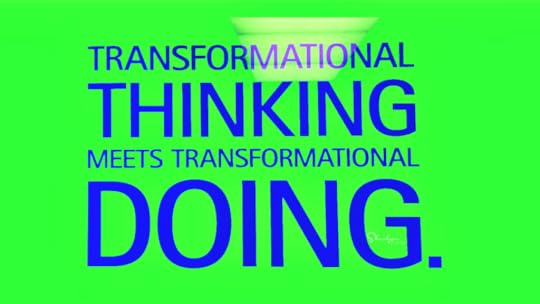
Estimated reading time: 4 minutes
One of the top priorities for any organization is hiring qualified employees. Whether your organization is doing a lot of hiring right now or a little, finding the right employees is important. As HR professionals, it becomes our goal to find sources for identifying the best talent. An excellent source for talent is fair chance hiring.
Fair chance employment is the practice of hiring individuals with a criminal record. It’s sometimes referred to as second chance employment. According to The Sentencing Project, between 70M and 100M individuals have a criminal record.
Having a criminal record, even without a conviction, can be a huge barrier to employment. Individuals with a criminal record have the skills to excel in the workplace. This is an opportunity for employers to hire qualified candidates who are ready to work and want to be loyal to an organization.
However, sometimes implementing fair chance employment practices means overcoming internal objections. Here are five common objections and some suggestions for how to address them.
“It will cost more.” Let’s get the money conversation out of the way. Often organizations don’t do things because they believe it’s expensive. According to research from the Society for Human Resource Management (SHRM), 81% of human resources professionals said their cost-per-hire (CPH) with a fair chance program was about the same or less than without. Don’t forget that the Work Opportunity Tax Credit (WOTC) gives employers who hire qualified individuals with a criminal conviction up to 25% of their first year’s wages. “No one else is doing it so why should we?” This is simply not true. The Second Chance Business Coalition (SCBC) is an organization that promotes the benefits of second chance employment. Its members include businesses from a wide variety of industries such a manufacturing, retail, transportation, financial services, and telecommunications. Not only does the SCBC demonstrate that companies are adopting fair chance employment practices, but it’s a resource to get information. “Other employees will quit because our workplace won’t be safe.” It might be tempting to jump to the conclusion that a person with a criminal history has been incarcerated and / or presents a risk. Again, this isn’t true. Of the 70M to 100M people with a criminal record, only 10M (or approximately 15%) have been incarcerated. As an example, Kelly partnered with a Toyota manufacturing facility to place non-violent criminals into jobs and found it increased their talent pool by 20%. Oh, and it decreased turnover by 70%. “Organizational performance will suffer.” Giving someone a second chance doesn’t mean they are second rate. In the same research from SHRM, 85% of human resources professionals found that employees with a criminal record performed their jobs at the same level or better than those employees without. And 75% said workers with criminal records were just as dependable. The SCBC backs this data – their research says that 82% of managers report employees hired through a second chance initiative bring just as much if not more value that employees without. “Customers won’t like it.” Ultimately, customers want good products, good services, and good prices. Customers will support organizations that deliver on those things. And even more when the organization demonstrates they have a sense of community. Dave’s Killer Bread grew their brand more than 50% by sharing stories of second chances and redemption. The key was being authentic and honest with customers.Identifying common objections and discussing them upfront will position the organization to have a productive conversation about fair chance employment.
In addition to doing your research, organizations should consider having discussions with their legal counsel and outside partners. They might have success stories that they can share. They can also offer different perspectives to consider.
Regardless of the unemployment rate, organizations are always looking for skilled employees. Fair chance employment is a source for skilled, loyal workers.
Image captured by Sharlyn Lauby while exploring the streets of London, England
The post Discussing Objections to Fair Chance Hiring appeared first on hr bartender.
September 3, 2024
Organizations: Why Pay Equity Matters and What To Do About It
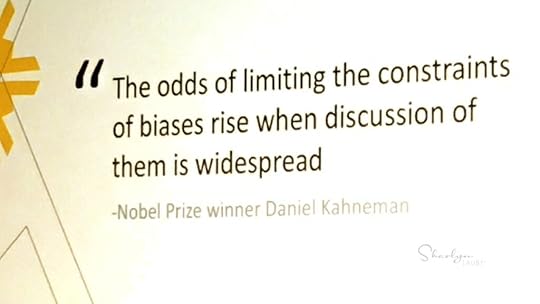
Estimated reading time: 8 minutes
I ran across a statistic from a USA Today survey indicating that 56% of respondents are planning to leave their jobs over pay. As human resources professionals, we often dismiss pay concerns because we see surveys saying that employees want purpose and meaningful careers. And it’s true. Employees do want those things. They also want to pay their bills and save for the future.
When it comes to pay, there are two questions that organizations need to consider. First, is an employee’s compensation externally competitive? Second, is the employee’s pay internally equitable? We’re going to talk about the second question today.
To provide us with some insights, I reached out to our friend Heather Bussing. She is a California employment attorney with over 30 years’ experience providing sensible and strategic advice to employers. Her deep experience with business, humans, technology, and work gives her a unique perspective focused on preventing and solving problems rather than fighting about them.
Heather has been interviewed and quoted in the New York Times, Wall Street Journal, CNN, Business Insider, and NPR. She is also the co-author of a new book “Get Pay Right: How to Achieve Pay Equity that Works” where she and Salary.com CEO Kent Plunkett offer practical guidance on addressing pay equity in organizations.
Oh, and before we go any further. Please remember that Heather’s comments shouldn’t be construed as legal advice or as pertaining to any specific factual situations. If you have detailed questions, they should be addressed with your friendly neighborhood labor and employment attorney.
Heather, thanks so much for being here and congratulations on your new book. You know I like to start our conversations with a definition. I noticed in “Get Pay Right” you’re introducing a different perspective on pay equity. Tell us your definition and why the distinction matters.
[Bussing] We define pay equity as ‘equal pay for comparable work that is internally equitable, externally competitive, and transparently communicated.’
The basic idea of pay equity is that people who are doing the same work should be paid the same. But there’s no such thing as work that’s exactly the same, which is why the law talks about comparable work instead of equal work.
Next, pay equity depends on what other people make inside the organization but that is always significantly influenced by what is happening in the market so we talk about internal equity and external competitiveness.
Then to effectively address pay equity, you need clear information and communications about why people make what they make. Transparency is part of fairness and also required as a part of compliance under many state pay transparency laws.
So, we defined equity in a way that covered the concepts needed to actually address the problem in a way that will work from a business perspective.
Compensation (both direct and indirect) is such an important topic to both employees and organizations. But because it’s so important, shouldn’t it already be a priority? I guess what I’m asking is … in your experience, why are we still talking about pay equity?

[Bussing] We’re still talking about pay equity because there have been laws on the books for over 60 years and we’re not making progress. The Economic Institute recently reported that in the U.S., there has been no meaningful progress toward eliminating gender pay discrimination in the past 30 years. The picture is even worse for women of color.
We’re also dealing with long predicted labor shortages based on aging populations, boomer retirements, declining birth rates, and immigration policies. This was all exacerbated by COVID.
In the meantime, after being told things can’t change for decades, suddenly everything changed with the pandemic. Things people were told were impossible happened quickly —remote work, reduced travel, flexible schedules, more autonomy. Employees could see that employers’ words and actions weren’t matching. Employees learned that they needed to be more assertive about what they needed, wanted, and would not accept.
Another big factor is the new tech and the focus on data and people analytics. Pay is data and pay equity is math (with some fancy statics thrown in). Pay gaps are one of the easiest forms of discrimination to see with data, which makes them easier cases to prove.
These factors have the attention of the Equal Employment Opportunity Commission (EEOC) and state legislatures who are increasing enforcement and passing new legislation on pay transparency and pay data reporting to encourage employers to do pay equity audits and address problems.
One of the most common ways that employees discover pay inequities is when they find out what their colleagues are being paid. First, from a legal perspective, can organizations prohibit employees from talking about their pay? Second, where do pay transparency laws factor into these conversations?
[Bussing] Employees have federal rights under the National Labor Relations Act (NLRA) to discuss wages, hours, and working conditions with their colleagues, regardless of whether there is a union. So, employers cannot prohibit employees from discussing pay with each other.
An interesting twist is that with salary history ban laws, employers also cannot force employees or candidates to tell employers what they made at their last employer. Employers can’t keep secrets about pay but employees can. This reflects the unequal resources and bargaining power between employers and employees.
Pay transparency laws are designed to keep the employers focused on what the work and role is worth instead of trying to benefit from past pay discrimination. Gaps in pay compound over time and exacerbate the problem. Women have 70% of the retirement savings of men. Because their career earnings are lower, they also have lower Social Security and other retirement benefits. They also live longer than men. This becomes a public policy issue pretty quickly.
The idea of pay transparency is to help all employees with the information they need to increase their bargaining power and to make it harder for employers to pay women and people of color less than their other colleagues.
What options do HR departments have when employees say, “But Joe gets paid more than I do!”? While it’s not true all the time, I do believe there are some employees who don’t understand their pay and it ultimately hurts them because they also don’t know how to have discussions about their pay . Are there things that organizations can do to help employees better understand how total compensation works?
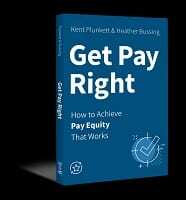
[Bussing] And important thing that organizations can do is to have a compensation strategy that helps leaders, managers, and employees understand how compensation fits into the organization’s finances, what factors affect compensation, and the impact of compensation decisions over time. For example, when a company lays off a bunch of people to polish its profit and loss statement (P&L) for reporting, they have to hire new people shortly afterwards to get the work done. This is very expensive and a bad way to treat people and do business.
At the same time, compensation often has very little to do with an employee’s work or performance and everything to do with the economy, investor skittishness, internal and external politics, and what’s going on in the market for the organization. None of this is in an employee’s control no matter how hard they work or what amazing work they do.
We need better financial literacy for everyone. This is so easy to say and difficult to do because there are so many barriers. One of the big ones is our cultural barrier against talking about money, which leads to financial literacy gaps for people in middle and lower economic classes. We need to improve financial education everywhere and that means talking about money.
The biggest, easiest thing organizations can do is be transparent about pay. That includes giving employees total compensation statements that set out the value of all forms of pay and benefits they receive, publishing pay ranges in job ads, and letting both internal and external candidates know the pay range at the beginning of the interview process.
Compensation is key to the relationship between employers and employees. People are not assets or resources to exploit. Honesty, transparency, integrity, and trust matter.
Last question. Some organizations might say that they’re facing financial challenges right now so they can’t deal with pay equity. What can HR pros say to address this statement?
[Bussing] Pay equity is a compliance issue that is always less expensive to solve than to not solve. Eventually, there will be a claim. That claim will grow into an investigation. And that investigation will end up with much bigger liabilities, penalties, agency orders, and legal fees.
Chances are the gaps are a few thousand dollars per affected employee. That’s what we’re seeing in the EEOC and class actions settlements. Sure. It adds up. But the legal fees, penalties, time, and resources needed to deal with a lawsuit make the pay equity damages look like petty cash.
Pay equity is a must do, not a nice to have. Instead of trying to get around it, get on board and take care of it. Then celebrate the commitment to fairness. Never waste a compliance opportunity to make a better workplace.
A huge thanks to Heather for taking time to share her knowledge with us. If you want to learn more about addressing pay equity, pick up a copy of “Get Pay Right: How to Achieve Pay Equity that Works”.
We all know that organizations are focused on a healthy bottom-line. That’s not new. The key to achieving that is having a compensation philosophy that’s equitable and competitive. It helps the organization attract and retain the best employees, which in turn, helps them generate the revenue they want and need to be successful.
Image captured by Sharlyn Lauby while exploring the streets of Seattle, WA
The post Organizations: Why Pay Equity Matters and What To Do About It appeared first on hr bartender.
August 29, 2024
Bookmark This! Workplace Communication Edition

Estimated reading time: 3 minutes
Communication is such an important part of both our personal and professional lives. Workplace communications have so many facets:
WrittenVerbalOne-on-one GroupsListeningPresentingIn my corporate life, this has always been the time of year when we were working on budgets, which also means we were working on goals. We would pitch the projects we wanted to take on in the next year and estimate how many resources we needed to accomplish the task. Sometimes we had to chat one-on-one with a business leader for their support. Other times, we were asked to make a brief presentation outlining the project along with its timeline and goals.
As you’re starting to think about your goals for next year and the resources it will take to accomplish them, here are a few resources that might help.
Grow Your Professional Career Through Networking
Even if you’re not looking for a new opportunity, building professional relationships both inside and outside the organization through networking remains a valuable activity. Networking can help us build confidence, boost our communication skills, market ourselves or our business, and learn new things.
Learn How to Use Silence in Your Communication
Being able to communicate well is important. When it comes to communication, we often talk about being able to communicate succinctly and clearly. We talk about the value of listening. But one aspect of workplace communication that we don’t discuss often enough is silence.
Silence can be a useful tool in communications. We’re not talking creepy moments of silence that last for eons. Think of this as just a natural pause in the conversation.
The Difference Between Training, Facilitation and Presentations
We continue to tell employees they need to own their career development. For that reason, employees are going to place emphasis on the various methods that information is being shared. So, speakers need to be cognizant that training is truly interactive, facilitation is objective, and presentations accomplish certain goals. That doesn’t mean presentations should be boring. It means that they need to be relevant and well-managed.
10 Public Speaking Tips for Your Next Business Presentation
The best way to learn public speaking is by doing it more often. It’s one of those things that gets easier with frequency. And being a little nervous is okay. It’s about focusing on being comfortable with the room so you can showcase your expertise and knowledge.
Having Media Literacy Is a Business Competency
As businesspeople, we spend a lot of time on the internet. We use articles and reports from the internet in our presentations and proposals. We share content on our social media accounts. We comment on what people write on their blogs, etc. It’s important that we’re responsible media consumers and publishers which means as individuals, we must learn how to be media literate.
Regardless of your job title, communication is a key part of your role. We have to attend meetings, talk with colleagues, and share information. It’s always good to take a moment for a refresher on communication success tips and strategies.
The next big thing you want to do could depend on it.
Image captured by Sharlyn Lauby aboard the Queen Mary in Long Beach, CA
The post Bookmark This! Workplace Communication Edition appeared first on hr bartender.
August 27, 2024
How HR Pros Can Manage Civil Discourse In the Workplace
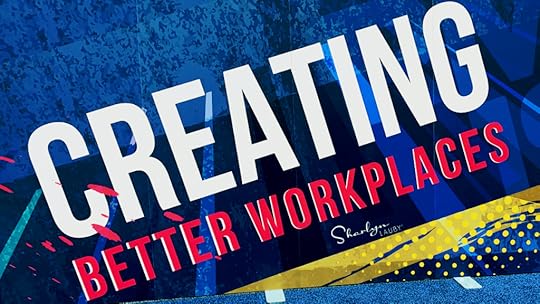
Estimated reading time: 8 minutes
I want to share a quick story. Years ago, I had started a new job, and my boss told me that one of the challenges in the human resources department was that the offices were “cold”, meaning that employees didn’t feel they could approach HR and talk with them about what was happening in the workplace. The reason I remember this story is because after some time, my boss came into the HR offices and talked about how “warm” it was. And it wasn’t the literal temperature … it was that employees would come by HR and talk with us.
I’m sharing this story because HR professionals have an opportunity right now to help their organizations “manage the temperature” of the work environment. I think we all realize there is tension in today’s workplaces, and it has an impact on our employees and our organizations.
The good news is that there are tools and activities that can help us, like a civility index. But before I get into that, to help us understand more about workplace civility, I asked Alexander Alonso, PhD, chief knowledge officer at the Society for Human Resource Management (SHRM) to share some data and insights. Alex is the author of “Talking Taboo: Making the Most of Polarizing Discussions at Work” and “The Price of Pettiness: Bad Behavior in the Workplace and How to Stomp It Out”.
Hi Alex. Thanks so much for coming back to chat with me. SHRM recently announced a new effort to spark 1 million civil conversations. Tell us more about this initiative and what prompted it.
[Alonso] Hi Sharlyn, I really appreciate you shedding light on the significance of SHRM’s initiative. The good news is we already surpassed 1 million civil conversations! However, there is still a lot more work that needs to be done to reintroduce civility to the workplace.

SHRM’s latest research shows U.S. workers reported experiencing or witnessing 201 million acts of uncivil behavior in their everyday lives just in the last quarter, which is up from 171 million uncivil acts from the first quarter. And when we talk about uncivil acts, it could be anything from being rude or disrespectful to intimidating behavior like yelling or constant interruptions…and we are learning many of these acts are related to the current political climate.
SHRM conducted a survey during recent events, such as the presidential debate, President Biden’s NATO conference, and the recent assassination attempt on former President Donald Trump. In this research, we learned 70% of U.S. workers say they have witnessed or experienced people making threats to one another and 69% say they have experienced or witnessed people being violent toward one another in their everyday life due to differences in political opinions. Much of this behavior is being brought into the office.
This paints a concerning picture of incivility in today’s workplaces, particularly as we approach Election Day. People experiencing or seeing this type of behavior in the workplace are significantly more likely to say they are unhappy with their jobs and are considering leaving within the next year.
Looking ahead, our research projects U.S. workers will experience 24 billion acts of incivility in 2024. These numbers really drive home the importance of creating environments built on respect and empathy. That’s why SHRM emphasizes the power of having civil conversations – it’s about making a difference one interaction at a time. Our focus should be on fostering an atmosphere of open communication and civil discourse, rather than taking sides on a particular issue. Creating this workplace culture is not just a matter of politeness, but rather a strategic imperative.
Given the statistics you’ve shared, I can see how there could be days when the divisiveness seems incredibly overwhelming. It might be tempting to say, “I don’t have time for this. I’m never going to convince anyone of anything.” Why is it important to engage in these civil conversation (versus just walking away from conflict)?
[Alonso] Simply walking away from the conversation is not going to de-escalate or reduce any tensions. We want to be the thermostat in the room, not the thermometer just measuring how heated a workplace can get. Engaging in civil conversation, even when it feels overwhelming, is vital for several reasons.
First, it fosters understanding and empathy, essential for bridging divides and finding common ground. Second, it provides an opportunity for personal growth, challenging our own perspectives and beliefs. Finally, by engaging constructively, we contribute to a culture of respect and cooperation, laying the groundwork for meaningful change and progress.The effort to have more civil conversations reminds me of your book “Talking Taboo” . Why is it important for HR professionals to help their organizations navigate these taboo topics?
[Alonso] I recall organizations’ response to various polarizing crises over the years. Many opted to ignore or, worse yet, to prohibit the mere discussion of topics happening in society. For me, it was the way my employer opted to eliminate any conversations about Elian Gonzalez and the U.S. Justice Department’s handling of the situation. As an impressionable young professional, I learned right away that organizations may want to prohibit talk, but it will never go away with 9 out of 10 working Americans admitting they have engaged in such discussions.
This puts organizational cultural norms at the heart of maintaining civility and dignity in the workplace. I knew I would be writing “Talking Taboo” back then; I did not know how much more volatile society would be in 2022 (the year of its publication).
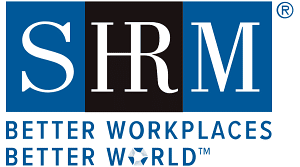
Employers need not overstep with their employees, but they are to be prescriptive in guiding their approach to civil discourse. By setting clear expectations for employee conduct, providing training on respectful communication, and leading by example, management can help mitigate the potential for conflict and maintain a productive work environment. This may involve:
Establishing guidelines for discussing political topics in the officeOffering resources for employees to engage in constructive dialoguePromptly addressing any instances of uncivil behaviorRegardless of the reasons behind certain polarizing discussions, it is clear companies must strike a delicate balance between allowing for employee expression and maintaining order in the workplace. This shift in approach highlights the challenges faced by organizations as they navigate the complexities of employee activism and the need to maintain a harmonious work environment.
For individuals who are looking for a way to get their thoughts across in a civil manner, is there a formula/model/template that they can use to help guide the conversation?
[Alonso] Yes, of course. There are a several steps you can take to help maintain civility in any discussion, especially in the workplace:
One is to suspend your judgment. For starters, it’s easy for us to walk into a conversation with our own mindsets, preconceived notions, and biases. It’s essential to approach the conversation open-minded and try to think from how the other person is feeling. This goes for both sides of the conversation.Another reminder is to take turns talking. We talked about some examples of uncivil acts at work as interrupting a co-worker. Try to take that into consideration when engaging in a conversation by allowing time for the other person to speak and for you to listen. This will help the other person feel heard.We also talked about being open-minded. This holds hands with empathy. Seek to understand the perspectives of others, even if you disagree. This creates a mutual respect.And finally, be open to asking questions. Clarify points of confusion by asking thoughtful questions. This demonstrates genuine interest and encourages constructive dialogue.Last question. Some people might be reluctant to engage in conversation because of a “less than civil” interaction from the past. What suggestions do you have for someone who is trying to move past an unpleasant experience?
[Alonso] It is important to be open-minded when approaching this type of discussion. In fact, the person you engage with in conversation may provide another perspective you’ve never thought beforehand.
It’s also important to prioritize self-care and emotional resilience. Reflect on the experience to extract any valuable lessons, but don’t dwell on negative emotions. Focus on fostering positive interactions with others, surround yourself with supportive individuals, and be open to giving conversations another chance.
I want to thank Alex for sharing this information with us. If you want to learn more, SHRM has introduced the civility index, a research initiative to provide human resources professionals with resources to create a more civil work environment.
Alex’s comments remind me that personally, as an HR professional, I have to be aware of my own feelings as well as the organization’s needs. I must respect others even if I don’t have the same opinion or wouldn’t make the same decision. And I need to encourage others to do the same.
Discourse doesn’t disappear overnight. This is a challenge that needs to be managed at every level in the organization.
Image captured by Sharlyn Lauby after speaking at the SHRM Annual Conference in Las Vegas, NV. Society for Human Resource Management (SHRM) logo used with permission.
The post How HR Pros Can Manage Civil Discourse In the Workplace appeared first on hr bartender.
August 25, 2024
Working with Complicated People: 7 Things to Consider

Estimated reading time: 4 minutes
As a human resources professional, I’ve often had to talk with employees about their relationships (or lack thereof) with a coworker. And when you get to the part of the discussion where you ask, “Hey, what’s up with you and INSERT NAME HERE?”, the answer you might get is “It’s complicated.” Meaning the situation is more than a little complex.
After listening to Ryan Leak’s session at SHRM24 on “How to Work with Complicated People”, I wonder if what the employee really means is that they’re working with a complicated person. Leak is the CEO of a leadership development firm based in Texas and the author of the best-selling books “Chasing Failure” and Leveling Up”.
Now you’re first reaction might be assuming complicated = bad. I’m not sure that’s true. The word complicated means “consisting of many interconnecting parts or elements”. If you think about it, on some level, we’re all complicated individuals. I feel like that was the takeaway from Leak’s session. Actually, that was one of seven takeaways during the session. Here’s the entire list.
Complicated is in the eye of the beholder. As I mentioned, if you look at the definition of complicated, we are all complicated beings. And complicated is not inherently bad. Recognizing that we’re all complicated is the first step in being able to work with others who are not like us. Consider your options. When it comes to working with others, we have options. We can 1) avoid, 2) change, 3) cancel, or 4) understand. Obviously, Leak’s session was focused on the last one – understand. But I do believe it’s important to realize that we do have options and think carefully about the best way to proceed. It could be tempting to avoid or cancel someone … but maybe that’s not the best long-term decision. Realize our own complications. This goes back to the first point. We might say to ourselves, “Oh, Leonard is very complicated.” Meanwhile, Leonard could be thinking the same thing about us. Becoming self-aware of what could be perceived as our own complications could be a valuable exercise in understanding others. Adjust (and share) our expectations. In our work relationships, we often have to rely on others. It’s okay to share our expectations. However, we do need to ask ourselves if our expectations are reasonable. Are we holding people to a standard that we can’t live up to? Leave margins for them to grow on us. Allow them to change. Sometimes the people we label as complicated are simply going through some stuff and need time. This links to considering your options. If we avoid or cancel someone, we might not see them grow and change. Same with trying to change others. It doesn’t allow them to grow into the best version of themselves. Use influence to understand the relationship and other relationships. We talked in a previous article about using influence to change the organization. We can also use influence to understand relationships. For example, if we’re part of a team, we can use influence to understand individual complications and team dynamics. Enjoy yourself. I took this comment from Leak’s session to be a piece of “Life’s too short.” wisdom. Yes, there are challenges in relationships that need addressing. But sometimes, a challenging relationship is simply an unpleasant moment … and it passes. So, in dealing with complicated people, are there places where you can agree, have a good time, and get stuff done.In the working world, we are not going to be best friends with everyone. Frankly, we might not even like some of our coworkers. But that doesn’t mean we can’t effectively communicate and get work done. Together. Maybe stepping back and considering the complications is a way to positively manage working relationships.
Image captured by Sharlyn Lauby while at the Wynwood Art District in Miami, FL
The post Working with Complicated People: 7 Things to Consider appeared first on hr bartender.
August 22, 2024
Upskilling and Reskilling: The Employers’ and Employees’ Role

Estimated reading time: 5 minutes
Today’s article isn’t about “quiet quitting” (yes, that’s still a trend). It is about employee retention. According to a new survey from Microsoft and LinkedIn, 46% of professionals are considering leaving their jobs. Statistics like these should cause employers to take a hard look at what they can do to engage and retain talent. Obviously, one strategy is raising wages and enhancing employee benefits. There’s nothing wrong with that strategy and many employers are doing it. But another strategy to consider is offering learning opportunities.
In iSolved’s Voice of the Workforce report, 24% of employees feel that the most important part of the employee experience is professional development and 44% say that learning opportunities keep them engaged at work. So, what’s the point of this data? Employees are looking for opportunities to learn and grow in their roles.
Upskilling and Reskilling: more than one way for an employee to learnThe good news is that when we’re talking about learning, there’s more than one way to do it. To start, let’s talk about what learning means. Learning is defined as “the acquisition of knowledge or skills through experience, study, or being taught”. This opens a lot of doors when it comes to employee learning. For instance, a new employee learns a company policy or procedure during orientation. Here are other ways that learning can occur:
UPSKILLING is the process of acquiring new skills for their current job. Example: a computer programmer learns new software.RESKILLING involves learning new skills, but it’s typically for a future responsibility. Example: An administrative assistant learns how to process payroll. DEVELOPMENT is traditionally associated with employees learning new skills that they will use in a new job with greater responsibility. Example: The company offers a management or supervisory skills development program. RETRAINING happens when an employee receives training for a second time. Example: The organization goes through a merger and everyone in sales must learn the new way to process expense reports.Learning involves both the employer and the employeeAs organizations are thinking about employee learning opportunities, it’s essential to bring employees into the process and let them know their participation is expected. Without employee buy-in, the learning process doesn’t have the same level of effectiveness. Employees could potentially resent the lack of control over their career and create barriers to learning where they didn’t need to exist. So here are some activities where employers can include employees in the learning conversation.
Talk about learning during the interview. Let candidates know that learning is important to the organization by discussing it during the interview. Ask candidates questions about learning like “Tell me about a time when you had to learn something new.” Or “Tell me about a time when you felt unprepared for an assignment.” These questions will open the door to talk about how the candidate likes to learn.
Use a journey map to show employees their onboarding roadmap. The new hire onboarding process can take weeks, even months. Organizations should develop onboarding roadmaps so an employee can see their learning path and ask questions. Managers can discuss with employees the roadmap, then regularly follow-up with the employee about where they are in their onboarding journey. The onboarding roadmap also allows employees to monitor their own learning progress.
Include learning topics in one-on-one meetings. Managers often have one-on-one meetings with employees to discuss performance, what’s happening in the department, etc. These meetings should also include a discussion about learning: what employees want to learn, how they would prefer to learn, and the connection between learning and their jobs. A key to this discussion is making sure that employees know how to communicate their learning needs and wants.
Solicit feedback on future learning activities in training sessions. Most training programs have some sort of feedback mechanism in place, like a post-training survey. If the survey doesn’t already ask the question, it might be good to ask participants “What type of training would you like to see in the future?” Employees might have some great ideas for future learning content.
Don’t mandate. Explain. Yes, there are required training topics and programs. But instead of using mandates, consider explaining why the learning is beneficial to an employee’s role. The principles of adult learning indicate that people want a sense of self-direction when it comes to their learning. And they want learning to build off their experiences. For example, managers should be able to discuss the connection between upskilling and/or reskilling programs and the employee’s career goals.
Discuss learning goals during performance appraisals. Speaking of career goals, this takes the one-on-one meeting discussions a step further. During the performance appraisal process, both the manager and the employee should discuss learning needs and wants. The employer might want to talk with the employee about participating in a reskilling program. Conversely, the employee might want to talk with their manager about being considered for a development program.
When employees get a say, learning helps with retentionRecent surveys are telling us that employees want learning, and they will stay with companies that offer learning opportunities like upskilling, reskilling, and development. But not when it’s mandated or dictated to them. Give employees a chance to be an active participant in learning conversations.
There are many opportunities throughout the employee life cycle to discuss learning – onboarding, performance management, and one-on-one meetings. These are great activities to show a commitment to learning and supporting employee growth.
Image captured by Sharlyn Lauby while exploring the streets of Gainesville, FL
The post Upskilling and Reskilling: The Employers’ and Employees’ Role appeared first on hr bartender.
August 20, 2024
5 Essential Topics to Cover in Recruiting Strategy Meetings

Estimated reading time: 5 minutes
When a job opening occurs, one of the first things talent acquisition professionals should do is have a recruiting strategy meeting with the hiring manager. Sometimes this meeting is called an intake meeting. Personally, I like recruiting strategy meeting better because it’s a reflection of the actual purpose of the meeting – to develop a recruiting strategy for this newly open position.
Even when you regularly recruit for the same position, it makes sense to have the recruiting strategy meeting. It doesn’t have to be a long meeting, but it does need to cover five essential topics.
The job. This is a perfect time to confirm that the job description is current. The last thing any recruiting professional wants is to start recruiting for an open position only to find that there have been some small updates to the job. That can delay the entire process. In addition to confirming the job description, discuss must-have knowledge, skills, and abilities (KSAs). It’s possible in a competitive job market that organizations might find a great candidate who has 95% of the KSAs for the job and can train them for the remaining 5%. This conversation should happen at the beginning of the hiring process, so organizations do not risk losing a great candidate because they didn’t think of it sooner. The work team. The recruiter and hiring manager should talk about the team from two standpoints. First, is there anyone on the current team who might be a good fit for this role? Many organizations have job posting programs to encourage internal mobility. If there’s a strong internal candidate, then there should be a discussion about the best position to recruit for – the current opening or backfilling the internal candidate’s role. The second thing to consider is any team dynamics that aren’t noted in a job description. The new hire will want to be a part of the team, so it only makes sense to factor that into the interview. Potential sources. A recruiter will want to ask the hiring manager if they know of any potential sources. There are managers who do a great job of staying on top of what’s happening with their competitors and can provide information about sources to focus on. In addition, this is a good time to share with the hiring manager some data about the effectiveness with current sources. The recruiting team should be tracking by source time to fill, cost per hire, and quality of hire. This information can help hiring managers understand the level of resources available for recruiting this opening. The interview process. This ties into the previous topic of potential sources. The recruiting strategy meeting is a good time to discuss the timeline for recruiting this position. It gives the hiring manager an opportunity to think about how they will manage their operation while the interview process is taking place. If they need to hire temporary staffing, that discussion can happen early in the process. Sometimes organizations find themselves frustrated because they simply say, “Oh, well just pay overtime.” Not thinking about how much time the interview process takes. Current employees get frustrated and stressed because they didn’t realize how much overtime they would be working. And that pushes the hiring manager to rush the process, whichAfter discussing these topics with the hiring manager, the recruiter can follow-up with a short recap email. Basically, the email now becomes “the recruiting strategy”. The recruiter and the hiring manager are in sync with what will happen and when. And if for whatever reason, the plan needs to change … the recruiter and hiring manager can do that knowing the original strategy.
One last thing, a common practice after hiring a new employee is for the recruiter to follow-up with the hiring manager and find out how the new hire is doing. The recruiter can use the information from the recruiting strategy meeting to ask “What went well? And what could we do differently next time?” to get additional feedback from the hiring manager and make the overall recruiting process even stronger.
Even when recruiters and hiring managers are busy and they’ve recruited for this same position dozens of times, it makes good business sense to have a recruiting strategy meeting.
Image captured by Sharlyn Lauby while exploring the streets of Weston, FL
The post 5 Essential Topics to Cover in Recruiting Strategy Meetings appeared first on hr bartender.
August 18, 2024
Use Your Communications Skills to Create Connections
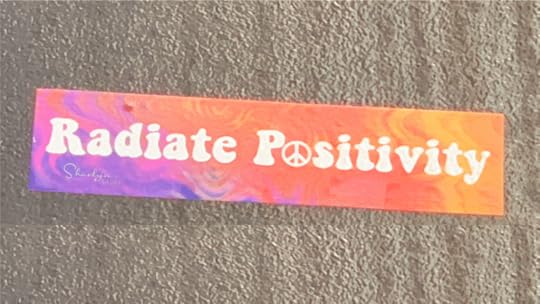
Estimated reading time: 4 minutes
Someone recently asked me “What kind of work do you do?” and I said that I was a human resources professional. The person gave me a look and said how they were called into HR once because they overheard a conversation and HR needed to ask them about it. They said the conversation was fine but that they always felt going into HR was like going to the principal’s office in school.
My response? “It’s not supposed to be that way.”
For years, HR departments have been perceived as disciplinarians and a place to avoid. But like I said, I doesn’t have to be that way. We can use our communication skills to create connections around the organization and influence perceptions.
That was my takeaway from Scott Tillema’s session at SHRM24. Tillema is a retired SWAT hostage negotiator who has been trained by the Federal Bureau of Investigation (FBI). His session at the conference was focused on using the power of communication to create connection and business success.
Tillema started his session discussing decision-making and how both individuals and organizations often make decisions using emotion versus logic. You could easily equate this to those times when managers say their “gut” tells them to do something versus looking at the data. These are the times when we want to use our communication skills to connect and hopefully influence someone to look at things differently. Tillema talked about four key communication strategies that can help create that connection and influence.
Manage yourself first. It’s important to recognize your own communication strengths and weaknesses when trying to build connections with others. For instance, listen to the environment around you to understand what’s going on. If you want to build connections, you need to know your audience. Part of figuring out your audience is knowing yourself.
Have the courage to start the conversation. Sometimes a person might say to themselves, “If an opportunity presents itself, I’ll speak up.” Or “I’ll wait and see if they ask me.” If we wait for the opportunity, it might not happen. Or it could be too late to have an impact. The second part of starting the conversation is being prepared to reveal a piece of yourself to create connection. Maybe it’s admitting that you’ve been in the same situation, and it didn’t turn out so well. Starting the conversation is the communication part. Revealing yourself is the connection piece.
Communicate well. In the first bullet, we talked about knowing your communication strengths and weaknesses. Communication skills are something we should be working on all the time. We want to communicate messages the right way using the right tools. And part of communicating well is empathetic listening. When it comes to communication, set goals for yourself and work on those goals. For example, someone who knows they get distracted by computer notifications, might want to develop a habit of closing the laptop or turning them off when meeting with others.
Create connections. One of the things that I liked about Tillema’s session was that creating connections wasn’t a one-time outcome. It’s something we should be doing all the time. I thought of this as a cycle. As we become more self-aware, we can become better communicators. And as we become better communicators, we can create connections. Those connections help us become more self-aware.
Regardless of your role in the organization, having good communication skills is critical. Our communication skills allow us to connect with others, give and receive feedback, and influence decision making. This is how we get things done and help the organization accomplish its goals.
Image captured by Sharlyn Lauby while exploring the streets of Tampa, FL
The post Use Your Communications Skills to Create Connections appeared first on hr bartender.
Sharlyn J. Lauby's Blog
- Sharlyn J. Lauby's profile
- 10 followers



